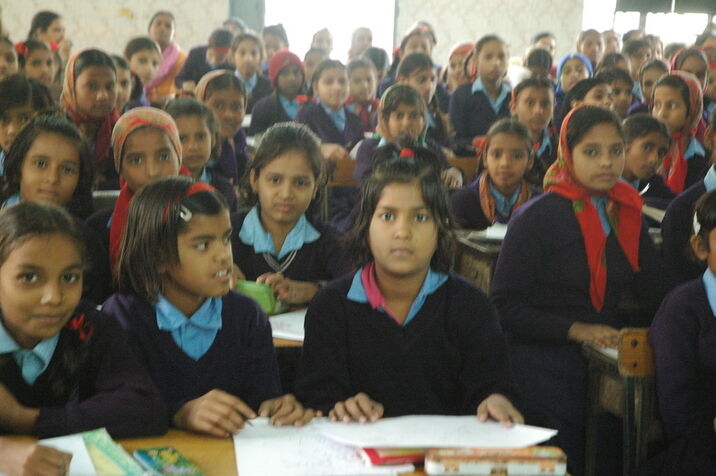The Urdu medium school run by the Municipal Corporation of Delhi (MCD) in Bulbuli Khana, located in Old Delhi’s Sitaram Bazaar, is in a state of disrepair. The infrastructure is dangerously dilapidated, with chipped walls, exposed electric wiring hanging outside windows, and only two cramped classrooms accommodating over 100 students. The school has just one makeshift teacher’s cabin.
This school is one of four Urdu medium schools in the area, all of which reportedly face similar conditions. In the absence of sufficient classrooms, students from multiple grades are forced to sit together in a single room. Rows are demarcated informally— the first and second grades occupy the front, while nursery and kindergarten students sit in the third row.
“I assign tasks to the lower-grade students in their notebooks and divide the blackboard to teach different classes simultaneously,” said a school staff member, speaking to national media.
The school also suffers from a critical shortage of staff. There is no appointed principal. In their absence, a single teacher and a special educator are burdened with both teaching and administrative responsibilities.
“I am teaching every subject from nursery to third grade. I also handle attendance, prepare monthly reports, oversee sports activities, manage mid-day meals, and even look after the IT desk—without any extra pay,” another staff member revealed.
Pupil-to-Teacher Ratio (PTR)
This poor pupil-to-teacher ratio (PTR) is a recurring issue across Urdu medium schools in the Sitaram Bazaar ward. In Lambi Gali, another MCD school is facing similar challenges—shortage of Urdu teachers and poor infrastructure. The last round of permanent teacher recruitment took place in 2016, and even then, only Hindi teachers were hired. As a result, many current instructors lack the ability to teach Urdu.
The absence of trained Urdu teachers is taking a toll on students, many of whom are unable to continue their education in higher grades due to weak foundational knowledge. Parents have expressed concern that despite attending school, their children struggle to read or write Urdu.
Further complicating the learning environment, while textbooks are printed in Urdu, worksheets are provided in Hindi, leaving students confused and hampering fluency in either language.
Currently, the Bulbuli Khana school has 450 students being taught by only seven teachers—an arrangement that falls well short of the guidelines under the Right to Education Act, 2019, which mandates a PTR of 30:1 for primary schools.
What MCD Says
“We had earlier sent a demand for primary teachers to the Delhi Subordinate Services Selection Board (DSSSB), but recruitment did not take place. Now, the process is being reassessed. The PTR calculations appear outdated. Attendance will be tracked until August 30, after which a fresh PTR will be calculated,” an MCD official said.
According to the financial department of the Delhi MCD, 9.83% of its total budget has been allocated to the 1,514 schools it runs—amounting to ₹1,693.7 crore. Additionally, a grant of ₹2,234 crore has been received from the Delhi government for the current fiscal year, which is being used for salaries, capital expenditures, procurement of textbooks, uniforms, and other educational materials.


